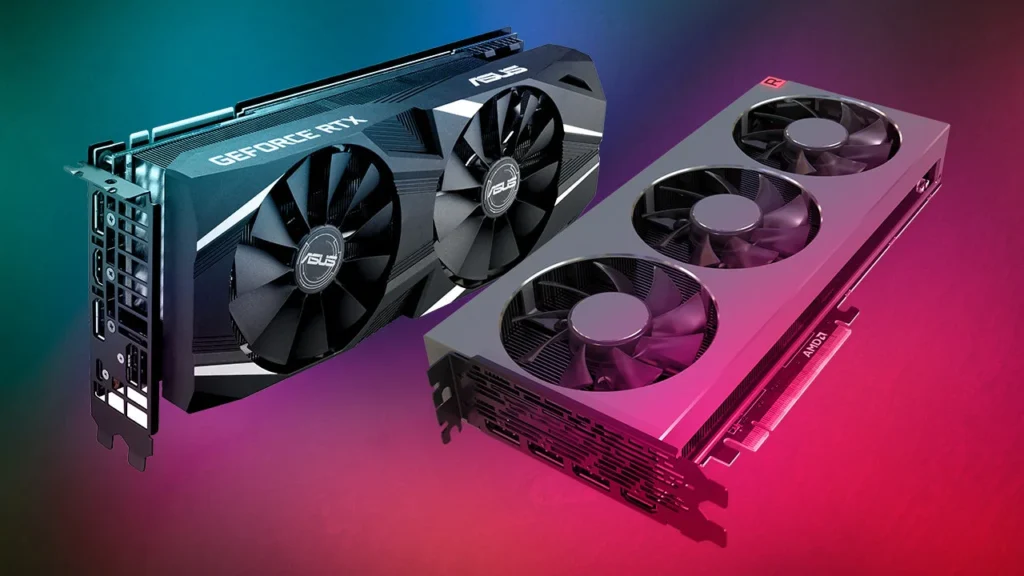Purchasing a graphics card is one of the most important upgrades you can make to enhance your computer’s performance. Whether you’re into gaming, video editing, 3D rendering, or other graphics-intensive tasks, the right graphics card can significantly improve your user experience. However, with the sheer number of models, brands, and specifications available, choosing the best option can be overwhelming.
At TechMatched, we’re here to help you navigate through this decision. Below, we outline the key factors to consider before buying a graphics card, ensuring you get the best value and performance for your specific needs.
1. Determine Your Budget
Setting a budget is the first and most crucial step in selecting a graphics card. Graphics cards range in price from affordable, entry-level models to high-end powerhouses that cost hundreds or even thousands of dollars. Knowing how much you’re willing to spend can immediately narrow your options.
- Entry-Level Cards (Approximately $100–$200): These are ideal for light gaming, basic video editing, and everyday computing tasks. Examples include the NVIDIA GTX 1650 or AMD RX 550.
- Mid-Range Cards ($300–$500): Suitable for 1080p or 1440p gaming with good frame rates, these cards provide a balance of price and performance. Examples include the NVIDIA RTX 3060 or AMD RX 6700 XT.
- High-End Cards ($600 and Above): These cards deliver top-tier performance for 4K gaming, virtual reality, and professional content creation. Cards like the NVIDIA RTX 4080 or AMD RX 7900 XT fall into this category.
Your budget will largely determine the card’s performance, so it’s essential to think about how long you expect your investment to last before needing an upgrade.
2. Identify Your Performance Needs
How you plan to use your graphics card is key to selecting the right one. Are you a casual gamer, a competitive eSports player, a professional content creator, or a mix of these? Understanding your performance needs ensures that you choose a card with adequate processing power.
- Gaming: If you’re a gamer, the graphics card is one of the most critical components of your setup. The card you choose should match the resolution and frame rates you want to achieve. For example:
- 1080p gaming: Mid-range cards like the NVIDIA RTX 3060 or AMD RX 6700 XT are ideal.
- 1440p or 4K gaming: For higher resolutions, you’ll need more power. Cards like the NVIDIA RTX 3080 or AMD RX 7900 XTX are suitable for ultra-high settings at 4K.
- Content Creation: For tasks like video editing, 3D rendering, and animation, you’ll want a card with more VRAM and processing cores. Cards like the NVIDIA RTX 4070 or AMD RX 6800 offer solid performance for professional work.
- General Use: If you’re using your PC for web browsing, video streaming, and everyday tasks, an entry-level card like the NVIDIA GTX 1650 will meet your needs without breaking the bank.
3. Resolution and Refresh Rate Requirements
The resolution at which you plan to play games or work directly influences the type of graphics card you need. Higher resolutions require more powerful cards to maintain smooth performance.
- 1080p Gaming: A widely-used resolution for gaming, 1080p is relatively easy to handle for most mid-range cards like the NVIDIA GTX 1660 Super.
- 1440p Gaming: If you’re gaming or working at a 1440p resolution, cards like the NVIDIA RTX 3060 Ti or AMD RX 6700 XT can deliver great frame rates with impressive detail.
- 4K Gaming: For the best visuals, a high-end GPU like the RTX 4080 or AMD RX 7900 XT is necessary for maintaining smooth performance at ultra settings.
Additionally, if your monitor has a high refresh rate (120Hz, 144Hz, or 240Hz), you’ll need a card that can output high frame rates to fully benefit from this feature.
4. VRAM (Video Memory)
VRAM is one of the most important aspects of a graphics card, as it stores textures, frame buffers, and other graphical data. The more VRAM your card has, the better it can handle complex graphics and higher resolutions.
- 4GB VRAM: Suitable for 1080p gaming and general computing tasks.
- 6GB to 8GB VRAM: Best for 1440p gaming or content creation tasks like video editing and 3D modeling.
- 10GB to 12GB VRAM or More: Required for 4K gaming, advanced video editing, or professional 3D rendering. Cards like the RTX 3080 come with at least 10GB of VRAM.
5. Power Supply and Compatibility
Graphics cards can be power-hungry, so it’s important to ensure your system’s power supply unit (PSU) can meet the card’s power demands. Always check the wattage requirements of your chosen card, as well as the connectors needed.
- Power Supply: Higher-end cards often require more than 600W to function properly, and some, like the NVIDIA RTX 3080, recommend a 750W power supply or higher.
- Compatibility: Ensure the physical dimensions of the card fit your PC case. High-end graphics cards are often large and may not fit in compact cases, so always measure your available space before purchasing.
6. Cooling and Noise
Modern graphics cards generate a lot of heat, so cooling solutions are essential. Cards are often equipped with single, dual, or even triple fans to dissipate heat, and some come with liquid cooling for enhanced thermal performance.
- Dual/Triple Fans: If you plan to overclock your GPU or live in a warm climate, choosing a card with more fans will help maintain performance over time.
- Noise Levels: More fans may lead to more noise, but many cards have advanced technology to keep things quiet during normal operation.
7. Brand and Warranty
Several brands produce graphics cards based on the same NVIDIA or AMD chipsets. While the core architecture remains consistent, build quality, cooling efficiency, and warranty support can vary between brands like ASUS, MSI, Gigabyte, and EVGA.
- Cooling and Build Quality: Premium brands may offer better cooling systems and materials, which can improve the lifespan and performance of your card.
- Warranty and Support: Always check for a solid warranty. Some brands offer extended warranties and better customer support, which could be important if something goes wrong.
8. Ray Tracing and DLSS (NVIDIA) or FSR (AMD)
Ray tracing is an advanced rendering technique that produces highly realistic lighting and reflections in games. DLSS (Deep Learning Super Sampling) is a feature unique to NVIDIA cards, which uses AI to upscale images, providing better performance without sacrificing quality.
AMD’s equivalent, FidelityFX Super Resolution (FSR), offers similar benefits and is available on AMD’s RX 6000 series cards. If you plan to play the latest AAA games or want to future-proof your system, you may want to consider a card that supports these technologies.
Conclusion
Choosing the right graphics card requires balancing your budget, performance requirements, and future needs. Whether you’re a gamer aiming for 4K resolutions or a professional content creator working on intensive projects, TechMatched is here to guide you every step of the way. By considering the factors outlined above, you’ll be well on your way to making a smart investment in your PC’s performance.
For the latest in-depth reviews and tech guides, visit TechMatched.pk, your trusted source for the latest technology news and updates in Pakistan.



